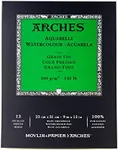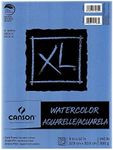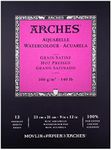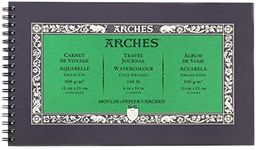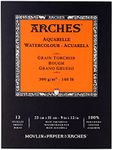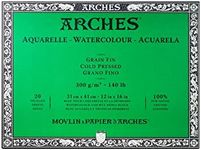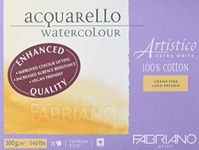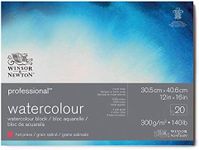Buying Guide for the Best Watercolor Paper
Choosing the right watercolor paper is essential for getting the best results from your painting. The paper you select affects how your paints behave, how your brushstrokes look, and how durable your artwork will be. Understanding the key features of watercolor paper will help you find the best fit for your style, techniques, and preferences.Paper WeightPaper weight refers to how thick and heavy the paper is, usually measured in grams per square meter (gsm) or pounds (lb). Heavier paper (like 300 gsm/140 lb and above) can handle more water without buckling or warping, making it ideal for wet techniques and multiple washes. Lighter paper (below 300 gsm/140 lb) is thinner and may need to be stretched before use to prevent warping. If you use a lot of water or like to layer washes, go for heavier paper. If you do lighter washes or sketching, lighter paper can work, but be prepared to stretch it or use less water.
Texture (Surface)Watercolor paper comes in three main textures: hot-pressed (smooth), cold-pressed (medium texture), and rough (very textured). Hot-pressed paper is smooth and great for detailed work and fine lines. Cold-pressed paper has a slight texture, making it versatile for both detail and expressive brushwork. Rough paper has a pronounced texture, which creates interesting effects with washes and granulating pigments. Choose the texture based on your painting style: smooth for detail, medium for versatility, and rough for expressive, textured effects.
Material (Cotton vs. Cellulose)Watercolor paper is made from either 100% cotton or wood pulp (cellulose). Cotton paper is more durable, absorbs water evenly, and is preferred by most artists for its professional quality. Cellulose paper is more affordable and suitable for practice or beginners, but it may not handle heavy washes as well. If you want the best results and plan to keep your artwork, choose cotton. For learning or casual painting, cellulose can be a good starting point.
Format (Sheets, Pads, Blocks, Rolls)Watercolor paper is available in different formats: loose sheets, pads (glued on one side), blocks (glued on all sides), and rolls. Blocks keep the paper flat while you paint, reducing the need for stretching. Pads and sheets are convenient for quick work or practice, but may need to be taped down. Rolls are for large or custom-sized projects. Pick the format that matches your workflow: blocks for convenience, pads or sheets for flexibility, and rolls for big projects.
Color (White, Off-White, Tinted)Most watercolor paper is white or off-white, which helps colors appear bright and true. Some papers come in tinted shades for special effects or mood. The color of the paper can influence the overall look of your painting, so choose white or off-white for most work, and experiment with tinted papers if you want a different atmosphere or effect.
